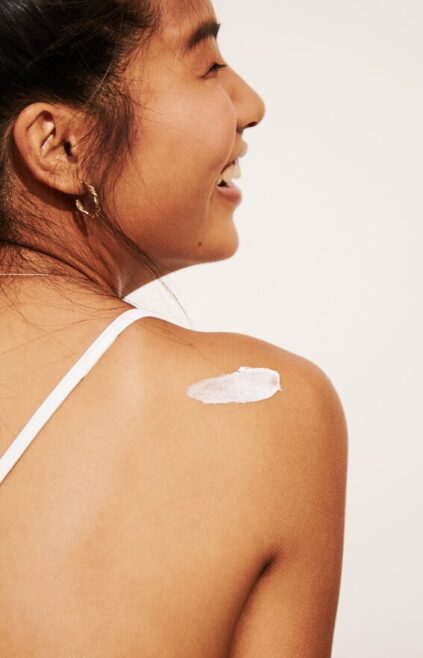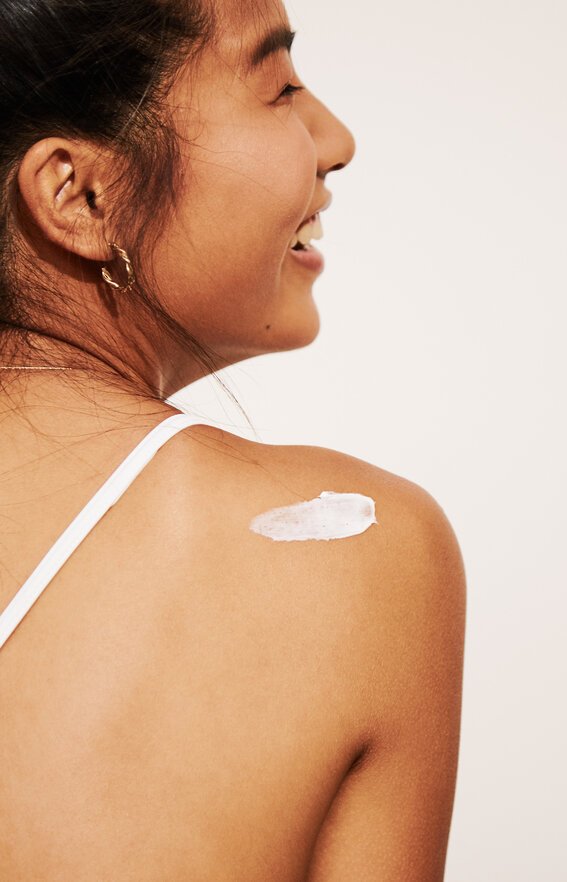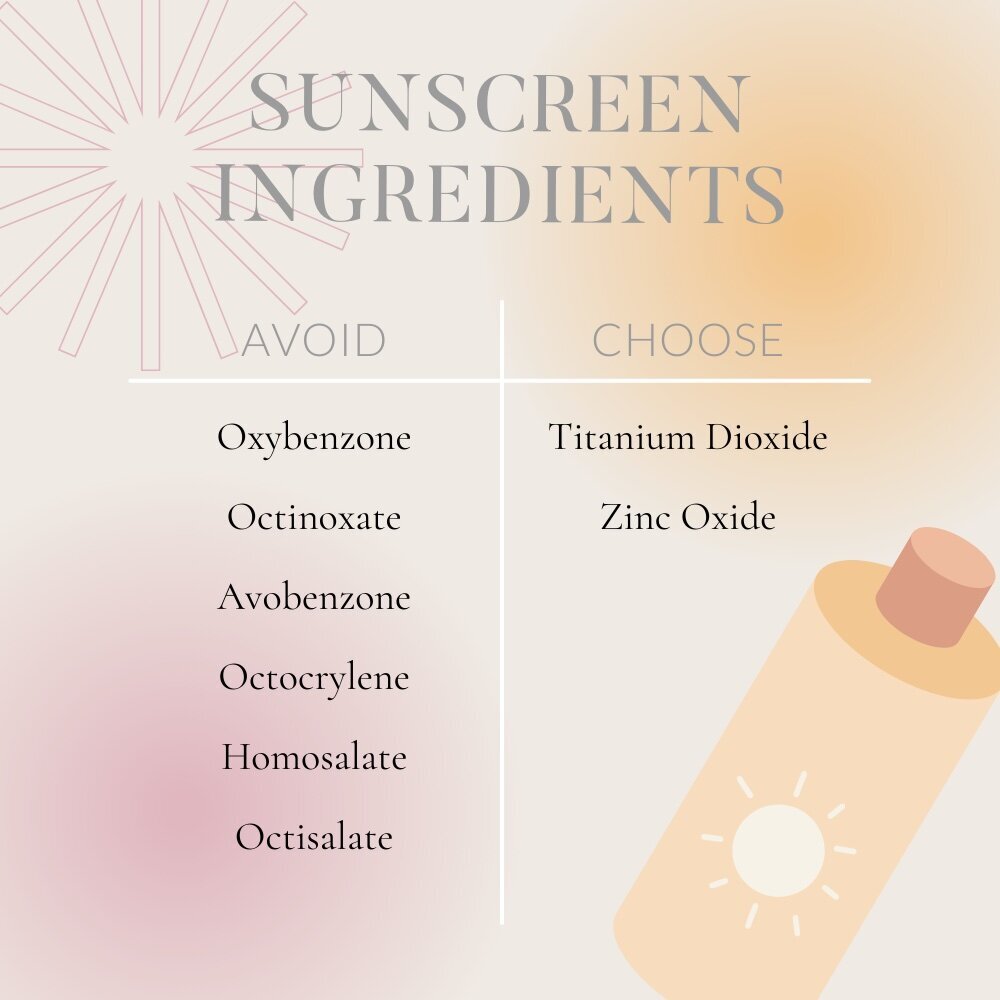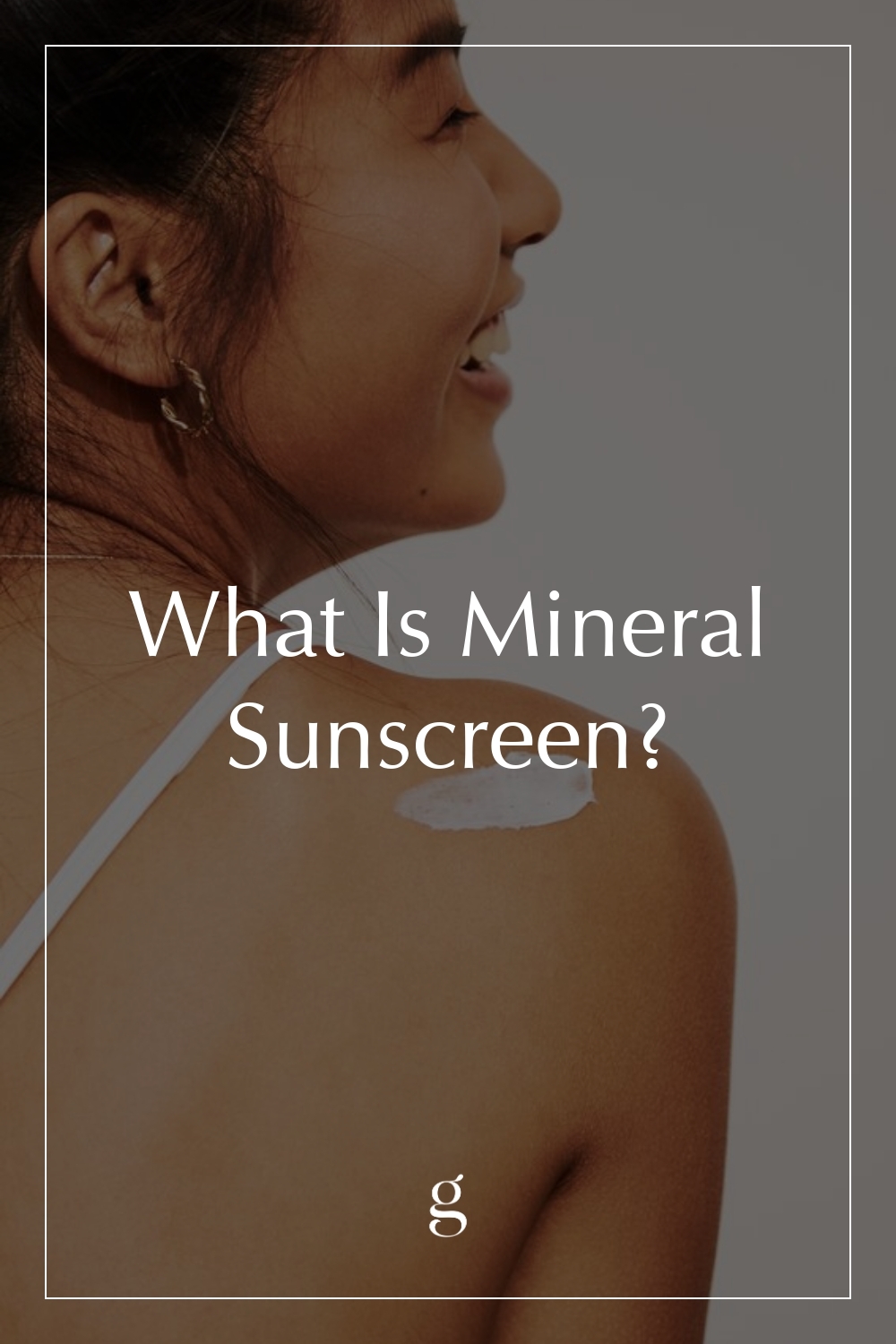
What Is Mineral Sunscreen?
What Makes Sunscreen “Clean”?
Growing up in California, it’s hard for me to recall any childhood memories that aren’t tainted with the nostalgia of shoeless summers and that familiar smell of Banana Boat. Still, as much as I always enjoyed fun in the sun, I hated the sticky feeling of slathering on (and reapplying) sunscreen.
As I’ve become more passionate about sustainable skincare in my 20s, my initial foray into clean beauty has taken me down the rabbit hole of finding the perfect, non-gooey sun protection. In addition to protecting against skin cancer (the most common cancer in the U.S.), studies have also shown that sunscreen can reverse signs of sun damage, like wrinkles and hyperpigmentation. No, really: A year-long study published in the journal Dermatologic Surgery found that daily use of SPF 30 improved skin texture and pigmentation.
“Sunscreen can reverse signs of sun damage, like wrinkles and hyperpigmentation.”
Yet as I’ve been learning more about the insidious dangers of the sun’s UV rays if you’re not applying sunscreen on the regular, I’ve also been learning about the importance of applying the right kind of sunscreen. There are growing concerns around the active ingredients in chemical sunscreens (used here to describe one of two camps of sunscreens: chemical vs. mineral). Chemical sunscreens, we now know, are chock-full of toxic substances that are destroying our coral reefs and seeping into our bloodstreams. What’s the deal?
The Environmental Impact Of Chemical Sunscreen
Around the world, more than 500 million people depend on our Prismacolor reefs for their livelihoods. The Coral Reef Alliance estimates that reefs feed up to one billion people. Reefs provide an important ecosystem for underwater life, absorb carbon dioxide and UV radiation, and protect coastlines by reducing the power of crashing waves. They play a pivotal role in marine life, but slowly, they are dying off. Eerie photographs taken by scientists and scuba divers show the skeletal remains of these white corals, spanning from the Great Barrier Reef to Hawaii.
Coupled with warmer ocean water, the acidification of our oceans, and the microplastic epidemic, everyday sunscreen ingredients—like oxybenzone, octinoxate, and avobenzone—have been found as toxic contributors to these coral ghost towns. Oxybenzone alone is estimated to be in 70 percent of sunscreens sold in the U.S. When washed off into our oceans and water supplies, these ingredients damage coral DNA and make them more prone to bleaching and reproductive defects.
“So imminent is the threat to our coral reefs that Hawaii, Key West, and the Pacific islands of Palau and the Virgin Islands have banned sunscreens containing oxybenzone and octinoxate.”
So imminent is the threat to our coral reefs that Hawaii, Key West, and the Pacific islands of Palau and the Virgin Islands have banned sunscreens containing oxybenzone and octinoxate. The Hawaiian law took effect at the start of 2021, and the state is trying to ban two more common sunscreen ingredients: avobenzone and octocrylene.
One way to mitigate the impact of our suncare on the environment is by using truly clean sunscreens, AKA mineral sunscreens with titanium dioxide or zinc oxide as active ingredients. These are the only two ingredients currently recognized by the FDA as generally safe and effective—pregnant or postpartum mothers, people with sensitive skin, eczema, allergies, and babies included. Mineral sunscreens are also known as physical sunscreens, because they literally act as a physical barrier or mirror that reflects the sun’s rays.
Contrast this to chemical sunscreens, which absorb the sun’s rays rather than reflecting them. Sam Juraschka, one of the founders of Hawaii-based sunscreen brand Lani & Kai, always tells customers to say “NO to the O’s—N(OOO) oxybenzone, octinoxiate, octocrylene.”
That’s just a starting point, though. The FDA lists additional active ingredients that seep into our bloodstreams (listed below). These ingredients are considered endocrine disruptors and can impact our reproductive systems and metabolism. The FDA has called for more testing. Despite this, chemical sunscreens still dominate approximately 60 percent of the sunscreen market (though down from 80 percent since 2013).
Making The Switch To Mineral Sunscreen
The reasons for switching to mineral sunscreen abound, from protecting our own bodies’ reproductive systems and metabolism to preventing further ocean acidification, coral reef bleaching, and harming ocean wildlife.
However, we would be remiss if we didn’t address the main complaint about mineral sunscreen: its consistency. Some sun-lovers think mineral sunscreen can be harder to blend into your skin, leaving a white cast.
But the innovation in the sunscreen market has blossomed in recent years, making this largely an old concern. While purists can still opt for a simple, well-formulated mineral sunscreen, makeup lovers can also take their pick, mixing-and-matching SPF-infused foundations with sunscreen sticks or even powder sunscreens (that double as setting powders). Lani & Kai’s sunscreen has the bonus of feeling like a moisturizer, while Hawaiian brand Living Koa has a relatively liquid, grit-free option for surfers and beach babes alike.
Personally, I like to combine my sunscreen and foundation by using a CC cream, a tinted mineral formula that has no white cast (try: IT Cosmetics’ CC+ cream or ILIA’s super serum skin tint). Though mineral sunscreens tend to be more expensive, many have turned to popular drugstore options like La-Roche Posay’s Anthelios Mineral Sunscreen.
“Many brands label themselves as ‘reef safe’ or tout using ‘clean chemicals,’ but you’ll find the reef-harmful chemicals in the ingredients list.”
Additionally, when choosing a mineral sunscreen, look for non-nano versions of ingredients (meaning they aren’t small enough to seep into your skin), formulas that contain active concentrations higher than 18 percent, and minimal virgin plastic packaging when possible.
Finally, beware of greenwashing as well. Many brands label themselves as “reef safe” or tout using “clean chemicals,” but you’ll find the aforementioned reef-harmful chemicals in the ingredients list.
Below are some other helpful terms and certifications to help vet your sunscreen. Just remember, it’s always a best practice to check the labels (or even contact brands) to know what you’re really putting on your face and body.
Other Terms and Certifications to Know
-
PA ratings: PA ratings are more commonly seen in Asian sunscreens and measure protection against UVA rays, which are responsible for fine lines and tanning your skin brown. PA ratings, short for “Protection Grade of UVA Rays,” range from a scale of + to ++++ for “some” to “extremely high” UVA protection. Until the 1990s, UVA rays were a bit of a mystery. They’re now known to account for a majority of the sun’s energy and can even filter through windows on cloudy days.
-
SPF: SPF measures how much sunscreen protects from UVB rays (read: sunburns). When looking at a sunscreen’s “Sun Protection Factor,” dermatologists recommend looking for at least an SPF 30 rating, which blocks 97 percent of UVB rays. SPF 50 blocks 98 percent of UVB rays, contrary to popular-but-overstated beliefs regarding sunscreens with higher SPF numbers.
-
Broad spectrum: Since the PA rating system isn’t as mainstream, especially for U.S.-branded sunscreens, the label “broad spectrum” describes a sunscreen that blocks both UVA and UVB rays.
-
EWG Verified: The Environmental Working Group is a nonprofit, nonpartisan organization that issues an “EWG Verified” certification after investigating a sunscreen’s ingredients and health concerns. For example, Babo Botanicals’ mineral sunscreen lotion and Biossance’s sheer mineral sunscreen have EWG-verified versions after going through comprehensive testing.
“Try to make your suncare both reef-safe and people-safe; it’s simple as making the switch to mineral sunscreen.”
Our solar-powered summers are truly the golden days for SPF: Slather it on, head to the beach, and voilá—insurance that you won’t be returning with a watermelon-hued blush from the sun! It is possible to make your suncare both reef-safe and people-safe; it’s simple as making the switch to mineral sunscreen.
Have you already made the switch to mineral sunscreen? Let us know below in the comments (and share your brand recommendations)!
Alice Zhang is a California-grown writer thinking on the things shaping urban living, the modern woman, and living a conscious life of impact in light of a bigger world. A graduate of Northwestern University’s j-school, she spent time abroad working with a microfinance project in Peru before transitioning into a 9-5 in the global development sector. Follow her latest creative endeavors and musings on Instagram at @alice.zhng.






